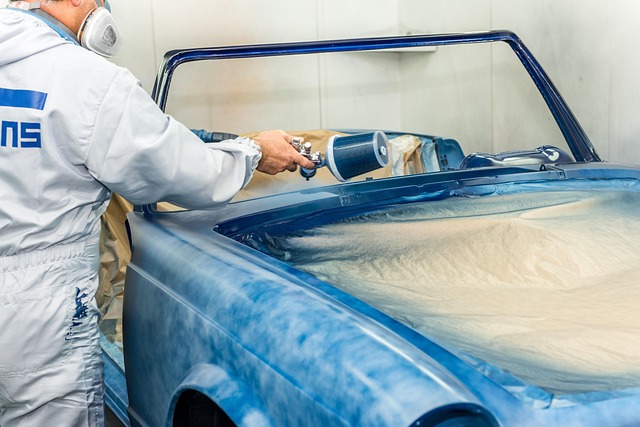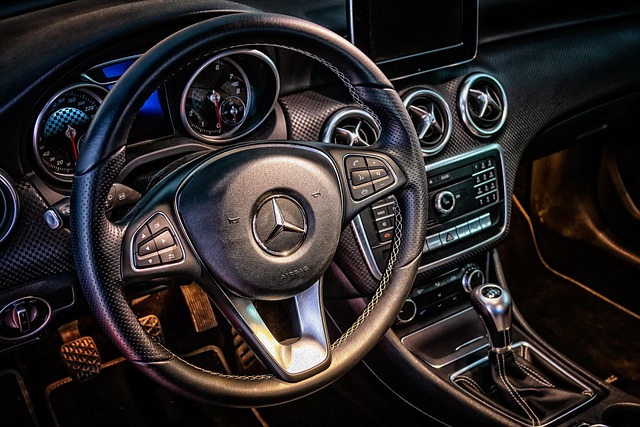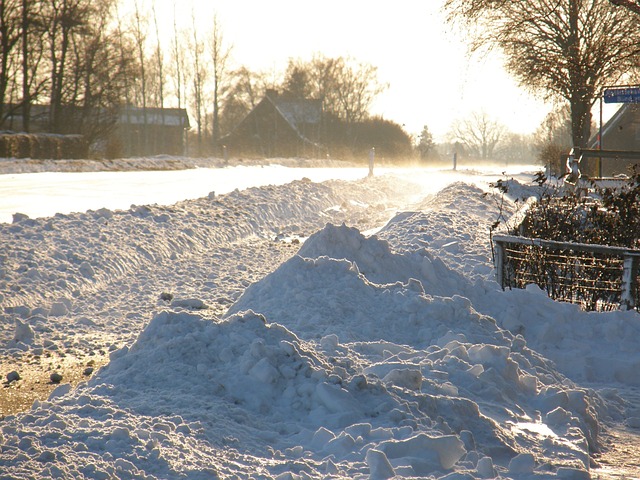Unraveling Paint’s Impact on Accident Repair Costs
The intricate relationship between paint and finish in auto bodywork significantly influences accide…….
In the dynamic realm of automotive industry, accident repair estimates stand as a critical component, acting as a bridge between initial damage assessment and the final restoration process. This intricate procedure involves meticulous calculations, precise evaluations, and strategic planning to determine the scope and cost of repairs required for vehicles involved in collisions or accidents. The article delves into the multifaceted world of accident repair estimates, exploring its definition, global impact, economic implications, technological innovations, regulatory landscape, challenges, successful case studies, and future prospects. By the end, readers will gain a comprehensive understanding of this essential process and its pivotal role in ensuring safe and efficient vehicle restoration worldwide.
Accident repair estimates are detailed reports that outline the necessary steps, materials, labor, and financial costs required to restore a damaged vehicle to its pre-accident condition or an agreed-upon standard. This process involves several key components:
Damage Assessment: The initial step involves thoroughly examining the vehicle to identify all damage, including visible and hidden flaws. This includes assessing body panels, frames, glass, interiors, mechanical systems, and electronic components.
Parts Sourcing and Pricing: Accurate estimates require research into replacement parts, considering factors like brand, quality, availability, and market pricing. This step ensures that the restoration uses genuine or certified parts to maintain vehicle integrity.
Labor Costs Calculation: Skilled labor is a significant expense in accident repairs. Estimates should include rates for different types of work, such as body shop labor, painting, mechanical repairs, and specialized services.
Time Estimation: Each repair step has an estimated time frame. This section provides a timeline for the entire restoration process, helping customers understand the expected turnaround time.
Historically, accident repair estimates were primarily paper-based, with technicians manually recording their findings. However, technological advancements have transformed this process, introducing digital tools and software that streamline calculations, improve accuracy, and enhance transparency for both repair shops and clients.
The global automotive industry’s growth and the increasing prevalence of road traffic accidents drive the demand for accident repair estimates worldwide. Here’s a snapshot of its international influence:
North America: The United States, Canada, and Mexico represent significant markets, with a focus on precision repairs and advanced diagnostics. The region has seen an rise in the adoption of digital estimating systems due to their efficiency and accuracy.
Europe: Countries like Germany, the UK, and France have robust automotive repair sectors, known for their high standards and strict regulations. European manufacturers often lead in introducing innovative repair techniques and materials, influencing global practices.
Asia Pacific: This region, encompassing China, Japan, and South Korea, is witnessing rapid urbanization and a surge in vehicle ownership. As road safety concerns grow, the demand for efficient and cost-effective repair estimates is on the rise.
Emerging Markets: Countries like India and Brazil are experiencing significant growth in their automotive industries. Local repair shops adapt traditional estimating methods to accommodate varying part availability and pricing structures.
The economic landscape of accident repair estimates is dynamic, influenced by market forces, consumer behavior, and industry trends. Key aspects include:
| Factor | Impact |
|---|---|
| Part Pricing Fluctuations | Global supply chain disruptions or changes in raw material costs can significantly affect part prices, requiring regular updates in repair estimates. |
| Labor Market Trends | Skilled labor availability and rates vary across regions. Repair shops must adapt their estimating practices to account for local labor dynamics. |
| Competition and Pricing Strategies | In competitive markets, repair shops may offer discounted estimates to attract customers. This can impact industry margins and encourage innovative pricing models. |
| Consumer Demand and Preferences | Growing preferences for advanced safety features and electric vehicles (EVs) influence the complexity of repairs, impacting estimate accuracy and costs. |
Technology plays a pivotal role in modernizing accident repair estimates, enhancing efficiency, and improving customer satisfaction. Notable advancements include:
Digital Estimating Software: Cloud-based platforms offer real-time data access, enabling technicians to quickly pull up part schematics, labor times, and pricing information. This streamlines the estimating process and reduces errors.
Computer-Aided Design (CAD) Systems: CAD software allows for precise measurement taking and 3D modeling of vehicle damage, facilitating more accurate repairs and costing.
Image Recognition and AI: Artificial intelligence algorithms can analyze damaged vehicle images to automatically detect and assess damage, speeding up the initial assessment process.
Internet of Things (IoT) Devices: Sensors and IoT devices integrated into repair shops provide real-time data on inventory levels, equipment usage, and technician productivity, optimizing resource allocation.
Regulatory frameworks play a critical role in ensuring fair practices and safety standards in accident repairs. Key policies include:
Vehicle Safety Standards: Governments set regulations for minimum safety standards, impacting repair estimates as shops must account for these requirements during restoration.
Labor Laws: These dictate minimum wage rates, working hours, and worker rights, influencing labor costs in estimates.
Environmental Regulations: Stricter emission and recycling standards may impact the availability and cost of replacement parts, requiring repairs to adhere to regulatory guidelines.
Industry Associations: Organizations like the International Association of Automotive Manufacturers (IAAM) promote best practices and provide guidance on estimating procedures for their members.
Despite its significance, accident repair estimates face several challenges that impact their accuracy and efficiency. Addressing these issues is crucial to maintaining high standards in the industry:
Data Inconsistency: Different repair shops may use varying data sources and estimating methods, leading to inconsistent results. Standardization and centralized data access can mitigate this.
Part Availability: Obtaining genuine or certified parts, especially for older vehicle models, can be challenging. Repair shops must maintain robust supplier networks and consider alternative solutions.
Labor Shortages: Skilled technicians are in high demand, creating labor shortages in some regions. Training programs and incentives can help address this issue.
Customer Trust: Misunderstandings about repair costs and procedures can erode customer trust. Transparent communication and clear estimates build confidence.
The following case studies illustrate the effective application of accident repair estimates in diverse scenarios:
Case Study 1: Efficient Urban Repair Shop
Location: Tokyo, Japan
Challenge: A bustling urban repair shop needed to reduce estimate preparation time while maintaining accuracy.
Solution: Implemented a digital estimating system with AI-powered damage detection. This streamlined the initial assessment, enabling technicians to focus on detailed repairs.
Result: Turnaround time decreased by 20%, customer satisfaction improved, and the shop gained a competitive edge in its fast-paced market.
Case Study 2: Remote Rural Community Restoration
Location: Outback Australia
Challenge: A remote community faced limited access to quality parts and skilled technicians for post-accident vehicle repairs.
Solution: Established a centralized estimating system linked to a national network of suppliers, ensuring timely part availability. Trained local mechanics in digital estimation methods.
Result: Improved accessibility to vehicle restoration services, reduced repair times, and enhanced road safety in the region.
Case Study 3: EV Repair Specialization
Location: Berlin, Germany
Challenge: With a growing EV market, traditional repair shops struggled with specialized electrical system repairs.
Solution: A niche repair shop invested in advanced training for its technicians and acquired specialized tools and software to handle EV repairs accurately.
Result: The shop became a trusted provider of EV accident repairs, expanding its customer base and reputation in the emerging electric vehicle sector.
The landscape of accident repair estimates is poised for further growth and transformation, driven by technological innovations and evolving market dynamics. Key future areas include:
Advanced Digital Integration: Further adoption of AI, IoT, and augmented reality (AR) to enhance damage assessment, part selection, and repair guidance.
Sustainable Repair Practices: Increasing emphasis on eco-friendly parts, recycling initiatives, and efficient waste management within repair shops.
Remote Estimating and Expert Consultation: Utilizing telemedicine to connect remote locations with specialized estimators and technicians for complex cases.
Data Analytics for Predictive Maintenance: Leveraging historical repair data to predict future trends, identify high-risk vehicles, and offer proactive maintenance plans.
Personalized Customer Experiences: Customizing repair estimates based on individual customer preferences and vehicle customization options.
Accident repair estimates are a cornerstone of the automotive restoration process, evolving to meet the demands of a dynamic global market. As technology advances and consumer expectations grow, the industry must embrace innovation while maintaining safety standards. By addressing challenges, adopting new technologies, and staying abreast of regulatory changes, repair shops can ensure efficient, accurate, and customer-centric estimates.
The future of accident repair estimates promises enhanced digital capabilities, sustainable practices, and a more connected global automotive restoration network. As the industry continues to navigate these developments, it will be well-positioned to serve the evolving needs of vehicle owners worldwide.
Q: How do I know if an accident repair estimate is accurate?
A: Accuracy depends on detailed damage assessment and reliable data sources. Digital estimating systems with AI integration can improve precision, but independent verification from experienced technicians is always recommended.
Q: Can I get a second opinion on my repair estimate?
A: Absolutely! Seeking a second opinion is a good practice. Many repair shops offer this service, providing you with alternative estimates and options to make informed decisions.
Q: What should I do if I suspect hidden costs in my repair estimate?
A: Review the estimate thoroughly and ask for clarifications. Reputable shops should provide detailed breakdowns. If concerns persist, consult industry associations or consumer protection agencies for guidance.
Q: How can technology improve my accident repair experience?
A: Technology enhances transparency with digital estimates, streamlines processes, and provides access to specialized knowledge. It also enables remote consultations, making it easier to get expert advice.

The intricate relationship between paint and finish in auto bodywork significantly influences accide…….

When comparing accident repair estimates, break down each quote meticulously to understand part and…….

Diagnostics are crucial in accident repair, forming the basis for precise and efficient accident rep…….

Using high-quality parts in accident repair is crucial for efficient, cost-effective, and safe vehic…….